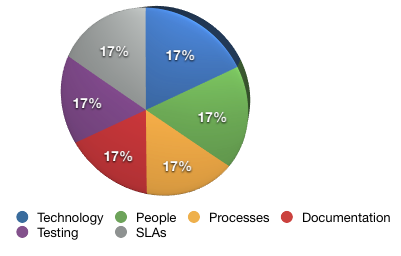Obviously the NetWorker Blog gets a lot of referrals from search engines via people looking specifically for help on particular NetWorker issues they’re encountering. Even just in the last 8+ hours, here are just some of the search terms that people used:
nmc doesn’t start
restore networker aborted saveset
networker disk backup module
nsr_render_log command
nsr_render_log daemon.raw
networker centos support
39077:jbconfig: error, you must install the lus scsi passthrough driver before configuring
And the list goes on and on, on a daily basis. This was reflected in the Top 10 for 2011 (and indeed, the top 10 for every previous year, too).
I’ll let you all in on a little secret though: all of those tips, all of those NetWorker basics articles and how to use nsradmin user guides – they’re all just the tip of the iceberg when it comes to getting a working backup system in place.
You see, a lot of sites don’t have a backup system at all – they just have some backup software and backup hardware and configuration. That doesn’t represent a backup system at all. From my article, “What is a backup system?“, I provided this diagram to explain such beasts:
As you can see, the technology (the backup software, hardware and configuration) represents just one entry point to having a backup system. The others though are all equally critical; and when you add them all in together, it becomes clear that a backup system will derive much of its success and reliability from the human and business factors.
The technology, you see, is the easiest part of the backup environment; and it’s also the part that’s most likely to appeal to IT people. If you were to graph how much time the average site spends on each of those activities, it would probably look like this:
 When in actual fact, it should look more like this:
When in actual fact, it should look more like this:
The short description? If you chart the amount of time you spend on your backup “system”, and the the Technology aspect (software, hardware, configuration) becomes a Pacman to the rest of the components, eating away at the rest of those facets, then you’ve got a cannibalistic environment that’s surviving as much as anything on luck/good fortune as it is on good design.
That’s why I bang on so much about backup theory – because all the latest and greatest technology in the world won’t help you at all if you don’t have everything else set up in conjunction with it:
- The people involved need to know their roles, and participate in both the architecture of the environment and its ongoing operation;
- The processes for use of the system must be well established;
- The system must be thoroughly documented;
- The system must be tested or you’ve got no way of establishing reliability;
- The Service Level Agreements have to be established or else there’s no point whatsoever to what you’re doing.
Backup theory isn’t the boring part of a backup system; I’d suggest it’s actually the most interesting part of it. Just as I suggested that companies need to plan to follow some new years resolutions for backup systems, I’d equally suggest that the people involved in backups should start making it their goal to spend a balanced amount of time on the components that form a backup system.
If you don’t have the theory, you actually don’t have a system.
If you want to know more, you should treat yourself to my book (now available in Kindle format).

